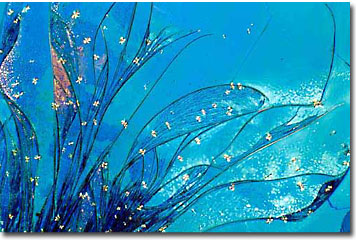Loes Modderman
Vitamin B1-Urea Mixture
Thiamine, or vitamin B1, was established as a cure and preventative measure for beriberi in the early nineteenth century. A result of deficient levels of thiamine, symptoms of this disease include mental impairment, muscle deterioration, high blood pressure, and cardiovascular difficulties.

Dr. Christian Eikjman has been credited with discovering the benefits of thiamine through his exposure to an Asian population that was seriously affected by beriberi. After extensive investigation, he ascertained that thiamine is able to break down in white rice. Thus, this population, whose diet heavily consisted of the grain, experienced catastrophic vitamin B1 deficiencies.
Thiamine is important for nervous system function, musculature and cardiovascular health, as well as for normal growth and development. The essential co-enzyme also aids in metabolizing carbohydrates, and it helps to regulate the appetite. Dietary sources of this vitamin include flour, brewer's yeast, beans, pork, salmon, soybeans, and wheat germ. However, thiamine can be lost in the food preparation process, so supplements are recommended.
Symptoms of thiamine deficiency may include fatigue, loss of appetite, nausea, vomiting, and various mental problems. In severe cases, beriberi may develop, or there may be such symptoms as heart enlargement, pain in arms and legs, and also fluid accumulation. It is interesting to note that, as thiamine metabolizes alcohol, chronic alcoholics are prone to thiamine deficiencies, and may ultimately suffer from dementia. Notably, a significant amount of psychiatric patients are also found to be thiamine-deficient.
Urea is the end product of nitrogen metabolism in most mammals, and it was the first animal metabolite to be isolated in crystallized form. In 1773, scientists discovered that urea releases ammonia when heated, and in 1828, urea was the first organic compound to be synthesized from inorganic materials.
Toxic ammonia is converted into urea within the liver. Although the highest concentrations of urea are found in urine, the compound is apparent in other body fluids as well, such as blood. Urea is transported in the blood to the kidneys, and then excreted via urine.
Concentrations of urea in the body will fluctuate throughout the day, and there are several factors that affect these levels. For instance, dietary intake of protein will tend to increase urea levels, while frequent urination will decrease urea levels. Concentrations of this compound in the blood tend to be highest after meals.
As a favorite ingredient for fertilizers, urea contains higher nitrogen content than the alternatives (46 percent). In addition, it produces few pollutants, and fire hazard is minimal. In granulated form, urea is hard, and more resistant to moisture, so most gardeners prefer to use the granules, as opposed to other available forms. Urea is also a common ingredient for skin care products, as it binds moisture to skin, reducing itching, cracking, and roughness. Additionally, the compound is used in the manufacture of plastics, as well as a variety of pharmaceuticals.
BACK TO LOES MODDERMAN GALLERY
